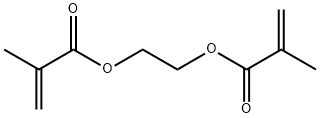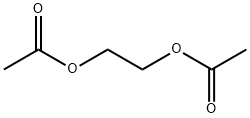Tetraethylene glycol dimethacrylate
Synonym(s):PEG bismethacrylate;PEG dimethacrylate;PEG hydrogel
- CAS NO.:109-17-1
- Empirical Formula: C16H26O7
- Molecular Weight: 330.37
- MDL number: MFCD00014932
- EINECS: 203-653-1
- SAFETY DATA SHEET (SDS)
- Update Date: 2025-12-17 09:50:34

What is Tetraethylene glycol dimethacrylate?
Description
Tetraethylene glycol dimethacrylate is a crosslinking agent of acrylic resins, employed to optimize the dilution of high-viscosity monomers and to link together the macromolecules costituting the polymer, to make their three-dimentional structure more rigid. Occupational dermatitis was reported in a dental technician.
Chemical properties
Water-white to pale-straw liquid. Insoluble in water; soluble in styrene, many esters, and aromatics; limited solubility in aliphatic hydrocarbons. Combustible.
The Uses of Tetraethylene glycol dimethacrylate
Plasticizer.
The Uses of Tetraethylene glycol dimethacrylate
methacrylate present in adhesives; in polyethyleneglycol dimethacrylate in Loctite anaerobic sealants.
The Uses of Tetraethylene glycol dimethacrylate
High purity PEG dimethacrylates are commonly used in PEG-based hydrogels and crosslinking hydrophilic polymers.
Hazard
Irritant to skin and eyes.
Properties of Tetraethylene glycol dimethacrylate
| Melting point: | 220℃ |
| Boiling point: | 220°C |
| Density | 1.082 g/mL at 20 °C(lit.) |
| vapor pressure | 0Pa at 20℃ |
| refractive index | n |
| Flash point: | 196°C |
| storage temp. | -20°C |
| solubility | soluble in Methanol |
| form | clear liquid |
| color | Colorless to Almost colorless |
| Water Solubility | 12.6g/L at 20℃ |
| BRN | 1803537 |
| CAS DataBase Reference | 109-17-1(CAS DataBase Reference) |
| EPA Substance Registry System | Tetraethylene glycol dimethacrylate (109-17-1) |
Safety information for Tetraethylene glycol dimethacrylate
| Signal word | Warning |
| Pictogram(s) |
 Exclamation Mark Irritant GHS07 |
| GHS Hazard Statements |
H227:Flammable liquids H319:Serious eye damage/eye irritation |
| Precautionary Statement Codes |
P210:Keep away from heat/sparks/open flames/hot surfaces. — No smoking. P264:Wash hands thoroughly after handling. P264:Wash skin thouroughly after handling. P280:Wear protective gloves/protective clothing/eye protection/face protection. P305+P351+P338:IF IN EYES: Rinse cautiously with water for several minutes. Remove contact lenses, if present and easy to do. Continuerinsing. P337+P313:IF eye irritation persists: Get medical advice/attention. P370+P378:In case of fire: Use … for extinction. P403+P235:Store in a well-ventilated place. Keep cool. |
Computed Descriptors for Tetraethylene glycol dimethacrylate
New Products
Indole Methyl Resin tert-butyl 9-methoxy-3-azaspiro[5.5]undecane-3-carboxylate Boc-His(Boc)-OH 2-CTC Resin 4-Chloro-7-tosy1-7Hpyrrolo[2,3-d]pyrimidine 5,7-Dibromo-1H-indole 2,5-dichloro-N-hydroxy-4,6-dimethylpyridine-3-carboximidamide 2,2-Dimethoxy-7-azaspiro[3.5]nonane hydrochloride 4-chloromethyl-5-methyl-1,3-dioxol-2-one (DMDO-Cl) R-2-BENZYLOXY PROPIONIC ACID 1,1’-CARBONYLDIIMIDAZOLE 1,1’-CARBONYLDI (1,2-4 TRIAZOLE) N-METHYL INDAZOLE-3-CARBOXYLIC ACID 4-((2-hydroxyethyl)thio)benzoic acid 1-(TERT-BUTOXYCARBONYL)-2-PYRROLIDINONE Methyl 6-methylnicotinate 3-Pyridineacrylic acid tert-Butyl carbazate TETRAHYDRO-2H-PYRAN-3-OL 2-((4-morpholinophenylamino) (methylthio) methylene) malononitrile 3-(4-morpholinophenylamino)-5-amino-1H-pyrazole-4-carbonitrile 2,4-dihydroxybenzaldehyde 1,3-Diethyl-1,3-Diphenylurea Methyl 2-methylquinoline-6-carboxylateRelated products of tetrahydrofuran








You may like
-
 Tetraethylene Glycol Dimethacrylate (stabilized with HQ) CAS 109-17-1View Details
Tetraethylene Glycol Dimethacrylate (stabilized with HQ) CAS 109-17-1View Details
109-17-1 -
 Tetraethylene glycol dimethacrylate CAS 109-17-1View Details
Tetraethylene glycol dimethacrylate CAS 109-17-1View Details
109-17-1 -
 Pyridine 99.5% HPLC /UV SpectroscopyView Details
Pyridine 99.5% HPLC /UV SpectroscopyView Details
110-86-1 -
 Piperazine Spot supply, best priceView Details
Piperazine Spot supply, best priceView Details
110-85-0 -
 Dibutyl PhthalateView Details
Dibutyl PhthalateView Details
84-74-2 -
 Imidazole Spot supply, competitive priceView Details
Imidazole Spot supply, competitive priceView Details
288-32-4 -
 Octadecyl 3-(3,5-di-tert-butyl-4-hydroxyphenyl)propionate 98% (GC)View Details
Octadecyl 3-(3,5-di-tert-butyl-4-hydroxyphenyl)propionate 98% (GC)View Details
2082-79-3 -
 Thiourea 99% ARView Details
Thiourea 99% ARView Details
62-56-6
